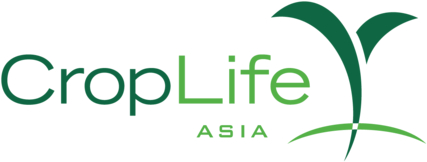With the recent release of the United Nations (UN) 2024 State of Food Security and Nutrition in the World (SOFI) report, CropLife Asia and its member companies are highlighting the increasingly critical role agricultural innovation and technology play in enabling and empowering regional farmers to produce the safe, nutritious and affordable food that drives food security in Asia.
According to the 2024 SOFI report, between 713 and 757 million people may have faced hunger globally in 2023 (or one out of 11 people). Meanwhile, Asia remains home to both the largest number of those facing hunger globally at 384.5 million as well as the most people experiencing moderate-to-severe food insecurity (1.18 billion) – up from 1.7 billion people the previous year[i]. The challenge of achieving the Sustainable Development Goal of Zero Hunger (SDG2) remains daunting with 582 million people projected to be chronically undernourished by 2030[ii]. Furthermore, a healthy diet remains unaffordable for 2.83 billion people worldwide as highlighted in the SOFI report. The cost of a healthy diet has risen since 2017 globally, peaking at an average of 3.96 PPP dollars per person per day in 2022 which is a 11 percent increase compared to 2021[iii]. Compared to the global average, the cost of a healthy diet is the second highest in Asia at 4.20 PPP dollars.[iv]“The growing population here in Asia and around the world, climate change impacts and geopolitical conflicts have only exacerbated an already challenging food insecurity landscape,” said Dr. Siang Hee Tan, Executive Director, CropLife Asia. “With agricultural innovations and plant science technologies, it is possible for farmers to produce more nutritious food with fewer resources and less impact to the world around us. That helps our smallholder farmers, national economies and trade, and most crucially, our collective regional food security. More than ever, we need science-based regulatory systems around Asia to provide timely reviews of the latest agricultural innovations and technologies that can help our smallholder farmers at such a consequential time for our region.”Plant science technologies such as plant biotechnology, gene-editing and crop protection products play a key role in supporting crop productivity, ensuring a stable food supply, managing and protecting natural resources as well as driving national economies. For example, biotech crops have increased global food, feed and fibre production by nearly 1 billion tonnes from 1996 to 2020.[v] During the same period, insect resistant crop technology used in maize has increased yields by an average of 17.7 percent relative to conventional production systems. The livestock industry is heavily dependent on maize as animal feed, making it a critical component of the agricultural economy.Gene-editing techniques such as CRISPR-Cas can be used in agriculture to build tolerant traits that can respond better to heat, drought and flooding, improve photosynthesis to boost yields and redesign crops to serve as more nutritious and sustainable food sources.About CropLife AsiaCropLife Asia is a non-profit society and the regional organization of CropLife International, the voice of the global plant science industry. We advocate a safe, secure food supply, and our vision is food security enabled by innovative agriculture. CropLife Asia supports the work of 15 member associations across the continent and is led by six member companies and one associate member company at the forefront of crop protection, seeds and/or biotechnology research and development. For more information, visit us at www.croplifeasia.org. For more information please contact:Duke HippDirector, Public Affairs & Strategic Partnerships CropLife Asiaduke.hipp@croplifeasia.org[i] FAO, IFAD, UNICEF, WFP and WHO. 2024. The State of Food Security and Nutrition in the World 2024 – Financing to end hunger, food insecurity and malnutrition in all its forms. Rome. https://doi.org/10.4060/cd1254en[ii] FAO, IFAD, UNICEF, WFP and WHO. 2024. The State of Food Security and Nutrition in the World 2024 – Financing to end hunger, food insecurity and malnutrition in all its forms. Rome. https://doi.org/10.4060/cd1254en[iii] FAO, IFAD, UNICEF, WFP and WHO. 2024. The State of Food Security and Nutrition in the World 2024 – Financing to end hunger, food insecurity and malnutrition in all its forms. Rome. https://doi.org/10.4060/cd1254en[iv] FAO, IFAD, UNICEF, WFP and WHO. 2024. The State of Food Security and Nutrition in the World 2024 – Financing to end hunger, food insecurity and malnutrition in all its forms. Rome. https://doi.org/10.4060/cd1254en[v] Brookes G. (2022). Farm income and production impacts from the use of genetically modified (GM) crop technology 1996-2020. GM Crops & Food, 13(1), 171-195. https://doi.org/10.1080/21645698.2022.2105626















